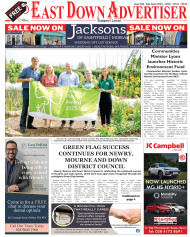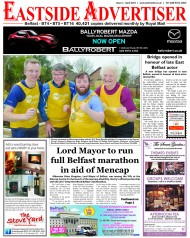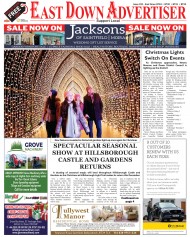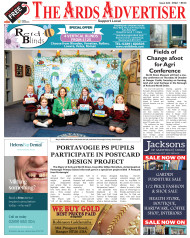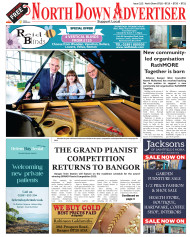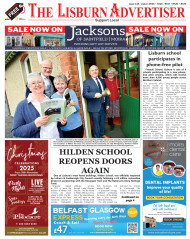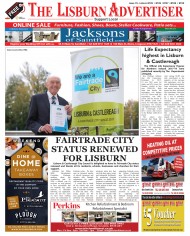Filter by Publication
Moat Park Development Involves a Cross-Community Norman Exhibition
August 2017 - South Side Advertiser

Pictured at the ‘Normans and their Legacy in Ireland’ event at Moat Park are: Sky from St Joseph’s Primary School, Lisburn; Councillor Tim Morrow, former Chairman of the Council’s Leisure & Community Development Committee and current Mayor and Matthew from Cairnshill Primary School.
Lisburn & Castlereagh City Council has commissioned a cross-community project for local young people to participate in entitled ‘The Normans and their Legacy in Ireland’ as part of its Development Plan for Moat Park, Dundonald.
The project facilitated by ‘Young at Art’ involved a series of workshops within the participating primary schools and youth groups: Cairnshill; St Joseph’s Lisburn; Carryduff; Moneyrea and St Joseph’s Carryduff; Lisburn Youth Centre and 29th Belfast Scouts, to design artistic illustrations of the legacy left by the Normans in Ireland. Each group created mosaics of Norman shields and swords, tapestries and took part in dramas detailing the story of the Norman lifestyle and their battles.
Councillor Tim Morrow, former Chairman of the Council’s Leisure & Community Development Committee and current Mayor, speaking about the project, said: “I was very impressed by the creativity and attention to detail of the artworks created by local schoolchildren. The Normans were well-known to create mosaics to tell the story of their heritage and battles; and our young people have portrayed the Norman heritage to a high standard in their artworks.
“The cross-community partnership working on this project has been excellent and our children and young people have embraced the opportunity to learn about their cultural heritage in a positive manner. I would like to commend the Young at Art artists and facilitators for all their hard work with the participating groups.”
In the coming months the work of the young people in this project will be interpreted into street art panels to be displayed in Moat Park.
Situated in the heart of Dundonald, the Moat Park offers idyllic walks around the historic Motte as well as provides a valuable link to shops in the village. Close by stands the Church of St Elizabeth which dates from 1306, providing an interesting piece of history passed the Doric style mausoleums.
Moat Park is a green oasis within the expanding townland of Dundonald. It is covered in rough grasses which shelter a range of flowering plants such as Tufted Vetch, Yarrow and Meadow Vetchling. In the summer a variety of insects are attracted to the grassy slopes including Common Green Grasshopper, Small Tortoiseshell Butterfly and the Silver Y Moth.
The short grassland which occurs throughout most of the park provides valuable foraging habitat for birds such as Blackbirds, Starlings and Rook, all of which visit to feed on the earthworms and insect larvae present in the soil. It is also an important habitat for fungi such as The Deceiver.
The many trees in the park provide a range of important habitats for insects, bats and birds. In the winter months the tiny Goldcrest, our smallest native bird at only 9 centimetres in length and weighing the same as a 20-pence coin, can be seen and heard foraging among the trees together with Blue, Great and Long-tailed Tits and the very colourful Goldfinch.
During very cold winters the Waxwing – an unusual bird found in the forests of Northern Europe – is forced to migrate to milder climates to find sufficient food to survive. Many of the large Cotoneaster trees which occur throughout the park provide a bountiful supply of red berries for this bird during harsh winters.
Small streams flowing through the park carry water originating from the Craigantlet Hills to the north. They provide ideal habitat for the Common Blue Damselfly, which can be seen patrolling up and down the streams for prey during the summer months. Bramble (Blackberry) and Wild Raspberry can be found growing on the stream banks. Both provide a sugar-rich food source for many birds and insects in late summer.

